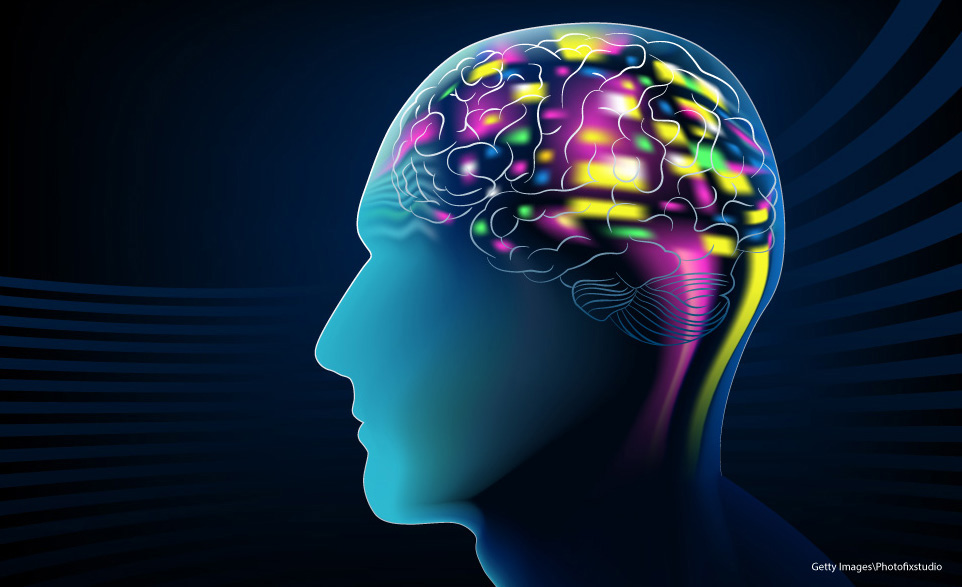Wired for Stories
The universality of stories tells us something important about our brains. Here are the facts.

“There have been great societies that did not use the wheel, but there have been no societies that did not tell stories.” –Ursula K. Le Guin
Stories are a central part of every country, culture, organization, and family. They make us laugh, cry, and feel connected. From a neuroscience perspective, that universality tells us something important—that our brains are wired for stories. We seek to share stories not because we want to, but because we must. Oral storytelling, reading, watching movies, and other means of communicating narrative, are that critical to how our minds operate. Why? Let’s look at a few brain facts.
Brain Fact #1: Our Brains Hunt for Patterns
The brain is a pattern-seeking missile. Our survival depends on being able to make predictions, on where to find food and shelter, or how to avoid being eaten. We learn to seek patterns in order to stay alive and healthy. This drive is so powerful that we do it in completely unthreatening situations, too. For instance, take a few moments to look at the following jumble of letters and figure out what word has been mixed up:
zrepi
Did you figure it out? If it took too long, you might have felt some mild stress. That’s caused by cortisol, because your brain wants to be able to make sense of things. Once you finally realized that the word was prize, you probably felt a little rush of elation. That was dopamine, the brain’s reward neurotransmitter. Even for something as relatively meaningless as unscrambling a word, you felt pleasure at recognizing the pattern. (That’s a reason why puzzles are a multi-billion-dollar industry.)
Once a pattern is established in our brain, it changes how we see new evidence. Confirmation bias, or ignoring information that conflicts with a previously identified pattern, is a normal function of the brain. We’ll disregard 10 bits of data that contradict our understanding and enthusiastically accept the 11th item that confirms it. And before pointing a finger at someone and saying “That explains why you never change your mind!” just remember you do it, too. Yes, you.
Brain Fact #2: Stories Are Patterns with Meaning
Emotions are a critical function of how we learn. The main neural structure for storing and recalling long-term memories is the hippocampus, which is part of the limbic or emotional network, in the central part of your brain. We can recall simple patterns by themselves, but we recall things much more easily if they have some meaningful narrative wrapped around them. One common example is constellations; every culture takes the groups of stars and creates stories around their arrangements in order to easier recognize them.
Brain Fact #3: Stories Are Mind Melds
Without language, our learning would be almost entirely limited to what we have personally experienced. An amazing thing happens in the brain when we hear a story. As the sights, smells, actions, emotions, or other sensations are described, the corresponding motor, sensory, and emotional areas in our brains light up as if we are experiencing them ourselves. It is a connection of the minds almost as powerful as anything in science fiction.
Within us are the experiences of hundreds, if not thousands of other people, all contributing some part to our web of knowledge. And a great deal of that information is social.
Brain Fact #4: Your Brain is a Social Register
There is a group of structures in the brain is called the “default network.” While not a particularly poetic name, it is descriptive, because these regions of the brain are the areas that are active by default. When dealing with a specific task such as reading this article, other regions of the brain are at work. However, the very moment you are finished with the article and your mind can wander, you have turned on the default network.
Researchers have figured out that the main purpose of this network is to process our social world: who likes you, who you like, your current social status, worrying about looking foolish in a meeting, trying to decide how to tell your partner bad news tonight, and so on. The brain’s priority is survival, and nothing is more critical than our network of relationships and social connections. It makes sense that it would invest a lot of processing power in figuring out the patterns of our interactions.
One of the most important results of this focus is what researchers call “theory of mind.” As we interact with family, friends, colleagues, students, parents, and anyone else we meet during the day, we are trying to read and interpret their thoughts and motives. It’s immediate and automatic, and typically happens without conscious thought. The default network practices to be ready for this moment!
For instance, if you look at this woman, you probably have a quick feeling for her frame of mind:

And if you encountered this woman, you would almost certainly develop a quick conclusion about her feelings about the current situation:

But what about this guy? Does his expression suggest interest, or disdain? How can you tell?

The stories you hold in your mind influence the default network, and will help determine how you interpret his motives.
Brain Fact #5: Stories Teach Us About People and How They Relate
It turns that the default network also becomes activated at other times. Brain scans indicate that it’s busy when you are listening to a story, and it isn’t looking for just any old patterns—your brain is seeking patterns that deal with people, their motivations, and how they interact with others. Even when the story is supposedly about animals or inanimate objects, those characters can hold such distinctly human personalities that our brains can’t tell the difference. The default network is not static, but it’s actively working to fine-tune our social understanding, and stories feed the brain for that process.
Brain Fact #6: Our Stories Are Our World
A true reflection of how we process stories is the question, “What would so-and-so do?” Our brain is constantly monitoring and filtering, ignoring some bits of information, accepting others, and assigning meaning to every experience. The characters and incidents we come to know through stories become part of our social and emotional programming as much as our own life experiences and act as guideposts in our interpretation of the world around us. As the writer Terry Pratchett stated in Witches Abroad:
“People think that stories are shaped by people. In fact, it's the other way around.”
What It Means for Us
That stories are powerful is not news to educators, of course, but there are a few ways to apply this knowledge to help our students.
- Narrative stories, whether nonfiction or fiction, are essential to cognitive, social, and emotional development. Exposure to engaging stories is not supplemental, it is a core need.
- Stories with diverse characters help students broaden their social understanding of people and cultures different than themselves. In the same way that a larger vocabulary can help develop a more nuanced understanding of content and ideas, a larger treasury of stories gives students greater ability to deal with others who are different socially.
- Stories with diverse characters engaged in underrepresented fields can help students shift their internal narratives about what they can do and achieve.
- All students have their own unique stories; the settings we provide and the ways in which we interact with them are feeding those stories. Are you a protagonist or an antagonist in their narrative? Do you know for sure? How can you ensure that your school and/or library is a positive setting in every student’s story?
- Give students opportunities to become their own storytellers. Writing narrative can be a very powerful form of metacognition, as it forces writers to consider how their characters feel, think, and react. Help your students understand narrative structures and let them take control of their own story. Bill Moyers states it well:
“Freedom begins the moment you realize someone else has been writing your story and it’s time you took the pen from his hand and started writing it yourself.”
To dig deeper into this topic, here are a few places to start:Vogler, Christopher The Writer’s Journey. (Michael Wiese Productions, 2007). An entertaining and informative book that looks at the hero’s journey story structure (first identified by Joseph Campbell) and character archetypes found in most stories. Cron, Lisa. Wired for Story. (Ten Speed Pr., 2012). Using the concepts of neuroscience to craft more interesting stories. The book covers some of what is discussed in this article, and much more. Bowker, Marjie, with assistance from Ingrid Ricks. They Absolutely Want To Write: Lesson Plans for Teaching the Heart and Soul of Narrative Writing . (Marjorie K. Bowker, 2014). This book and curriculum are based on the wonderful student writing program of Scriber Lake High School in Edmonds, WA. (The Bill Moyers quote above is taken from the title page of one of their books of student writing.) McCloud, Scott. Understanding Comics. (HarperPerennial, 1994). Not all narrative is written or spoken. Comics and graphic novels are a powerful means of storytelling, and this book is a masterful exploration of how visual stories work. |
Conn McQuinn is a consultant and the owner of McQuinnable Educational Services. He has degrees in science and education, and 40 years of experience in science and technology education in both informal and formal settings, including the Pacific Science Center and Puget Sound ESD. He has served on the boards of the Washington Science Teachers’ Association and the Northwest Council for Computers in Education, presented at numerous conferences, and survived two years of being a PTA co-president. Conn is also the author of over a dozen children’s activity books, all of which are out of print and can only be found in the dusty corners of eBay.
RELATED
The job outlook in 2030: Librarians will be in demand
The job outlook in 2030: Librarians will be in demand
ALREADY A SUBSCRIBER? LOG IN
We are currently offering this content for free. Sign up now to activate your personal profile, where you can save articles for future viewing





Add Comment :-
Be the first reader to comment.
Comment Policy:
Comment should not be empty !!!